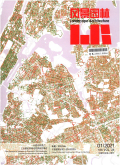风景园林2024,Vol.31Issue(10):58-63,6.DOI:10.3724/j.fjyl.202405200275
"文化遗产的自觉"与景观变迁——日本冲绳久米岛的人类学考察
"Perceptions of Cultural Heritage"and Landscape Change:An Anthropological Study of Kume Island,Okinawa,Japan
摘要
Abstract
[Objective]This paper is intended to trace landscape transformations on Kume Island,Okinawa,between the 1970s and 1990s,focusing on the emergence of a phenomenon that could be called"heritage consciousness." [Methods/process]After the 1970s,Okinawa experienced a boom in tourism development,and villagers created numerous landscape elements such as red-tiled roofs,shissa,ishigantou,and utaki to represent Okinawa's distinctive landscape.The proliferation of these landscape elements has certainly been influenced by Okinawa's tourism policy,but to view it solely in terms of such political and economic dynamics is to lose sight of the essence of the landscape transformations on Kume Island.Therefore,this study focuses on why villagers created red-tiled roofs,utaki,and other landscape elements with their own hands,using the perspectives and methods of landscape anthropology.Specifically,we will trace the physical transformations of the landscape through mapping and examine the villagers'stories,dreams,beliefs,social relations,and relationships with the environment through fieldwork to decipher how they have modified the landscape. [Results/conclusion]My investigation reveals that the villagers perceive the red-tiled roofs,utaki,etc.,as a"cultural heritage"they must protect and have been guided by a different set of concerns than tourism policy in reproducing the landscape.关键词
景观/文化遗产/空间/场所/遗产意识/冲绳Key words
landscape/cultural heritage/space/place/heritage consciousness/Okinawa分类
土木建筑引用本文复制引用
河合洋尚,侯建卫.."文化遗产的自觉"与景观变迁——日本冲绳久米岛的人类学考察[J].风景园林,2024,31(10):58-63,6.基金项目
日本人间文化研究机构全球地域研究项目"海域亚洲大洋洲研究"(NIHU Global Area Studies Program,Maritime Asian and Oceanian Studies) (NIHU Global Area Studies Program,Maritime Asian and Oceanian Studies)

